

.jpg)
10 October 2019
Ivy Bees were seen on the Ivy
After a week of inclement weather, there were no butterflies seen in the breeze on a brief visit to the lower slopes of Mill Hill. Occasional Ivy Bees were seen on the Ivy amongst the scrub.
20
September 2019
There
were scores of Ivy Bees,
Colletes
hederae, where the soil was exposed
on the lower slopes of Mill Hill
16
September 2019
There
was over a dozen nests and scores of Ivy
Bees, Colletes
hederae, where the soil was exposed
on the west facing (TQ 20960 07373) lower
slopes of Mill Hill in the afternoon. Ivy
was seen in flower as I returned by the uneventful ridge route in
humid conditions.
Ivy
Bee National Records 2019
| 1
August 2019
Ichneumon Wasp on Mill Hill. Lissonota
sp,
|
| 17
June 2019
A small predatory flying insect entered minute holes in the soil on the middle slopes of Mill Hill. It was less than 15 mm long and difficult to spot (smaller than a Marmalade Fly). Digger
Wasp
|
.jpg) |
6
June 2019
A handful of small long-tailed Ichneumon-like Wasps Gasteruption sp, all skulked over the flowers of the ground-hugging Creeping Cinquefoil. |
.jpg) |
28
April 2019
Wasp Beetle, Clytus arietis, on an Elm leaf, by the footpath by Frampton's Field, at the top of The Street, Old Shoreham. |
c.jpg) |
23
April 2019
A small bee was occasionally seen on the lower slopes of Mill Hill, small and rather distinctive in yellow and black barring: I think this was a Nomada species, most likely Nomada goodeniana. 22
April 2019
Lasioglossum ?? |
 |
10
September 2018
Again
this year, there were the colonies of Ivy
Bees using bare earth ramparts on the
lower slopes of Mill Hill.
|
| 31
August 2018
Small Lasioglossum bees on Burnet Saxifrage Lower slopes on Mill Hill |
| 29
August 2018
A predatory sawfly Tenthredo species was spotted in the top meadow of Mill Hill on a cloudy afternoon. |
| 11
April 2018
Small
bee on Green
Alkanet at Cuckoo's Corner, Coombes Road.
|
 |
| 21
May 2017
Daisy Bee Possibly Lasioglossum calceatum which is named the Common Furrow Bee PS:
ID may be incorrect as the bees are meant to emerge in July.
|
 |
4
May 2017
Andrena |
| 12
April 2017
Andrena nitida Waterworks Road, Old Shoreham |
Some
identifications are questionable, beware.
30 September 2016
1 August 2016
Small bee on Hoary Ragwort on the Downs Link Cyclepath
It could be Lasioglossum calceatum
Stephen Boulton: or Lasioglossum albipes, I don't think they can be separated by photo ID.
The bee on the left was thought to be an Andrena. Species ID was not possible.
Mill Hill
| 23
September 2015
Ivy Bee, Colletes hederae on Mill Hill |
| 13
August 2015
Digger Wasp Ectemnius sp on Hogweed with Hoverflies on Buckingham Cutting (south).
|
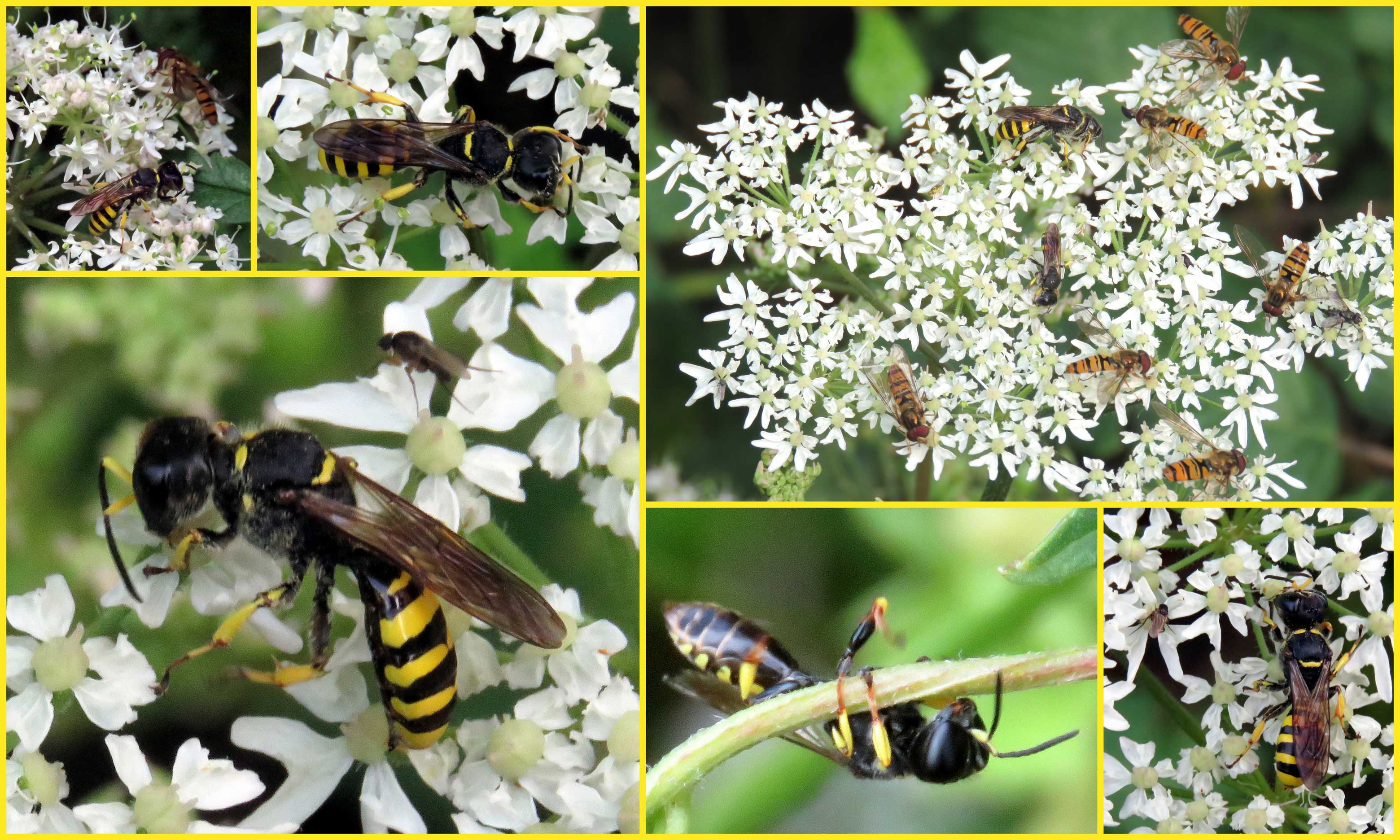 |
| 27
June 2015
Lasioglossum calceatum, wing venation (curved basal vein) and various characters of the abdomen rule out Andrena Old Shoreham, by the cyclepath |
 |
 |
1
May 2015
Gold-fringed
Mason Bee (probable)
Horseshoe Vetch on Mill Hill |
| 16
September 2014
Nearer the northern end of the lower slopes of Mill Hill, and sometimes near the path, there were small cliff edges of exposed soil and these were used by congregations of the Ivy Bee, Colletes hederae. Colletes species Small Bee landing on Ragwort |
 |
| 8
August 2014
A Digger Wasp Ectemnius sp on Hogweed in the shady wooded bit at Buckingham Cutting (south). Crabroninae
Wasps
|
 |
16
April 2014
|
|
 |
|
|
Top of Chanctonbury Drive |
2013
 |
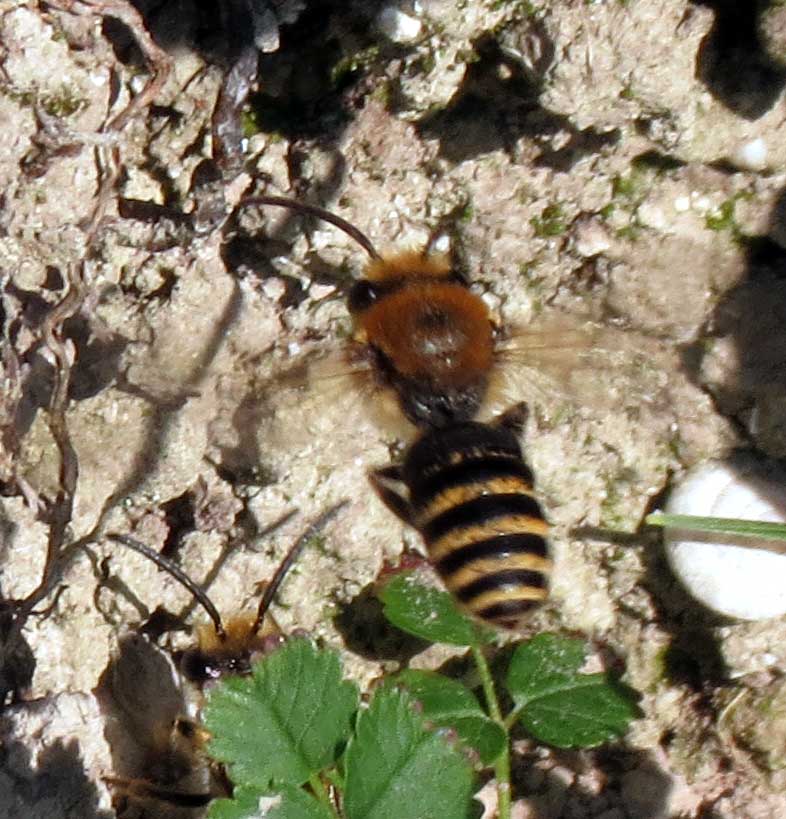
The congregations of small solitary bees, the Ivy Bee, Colletes hederae, were again observed. There were over a hundred holes but not so many bees. Their habitat may have been helped to be created by the activities of Rabbits or by human disturbance. |
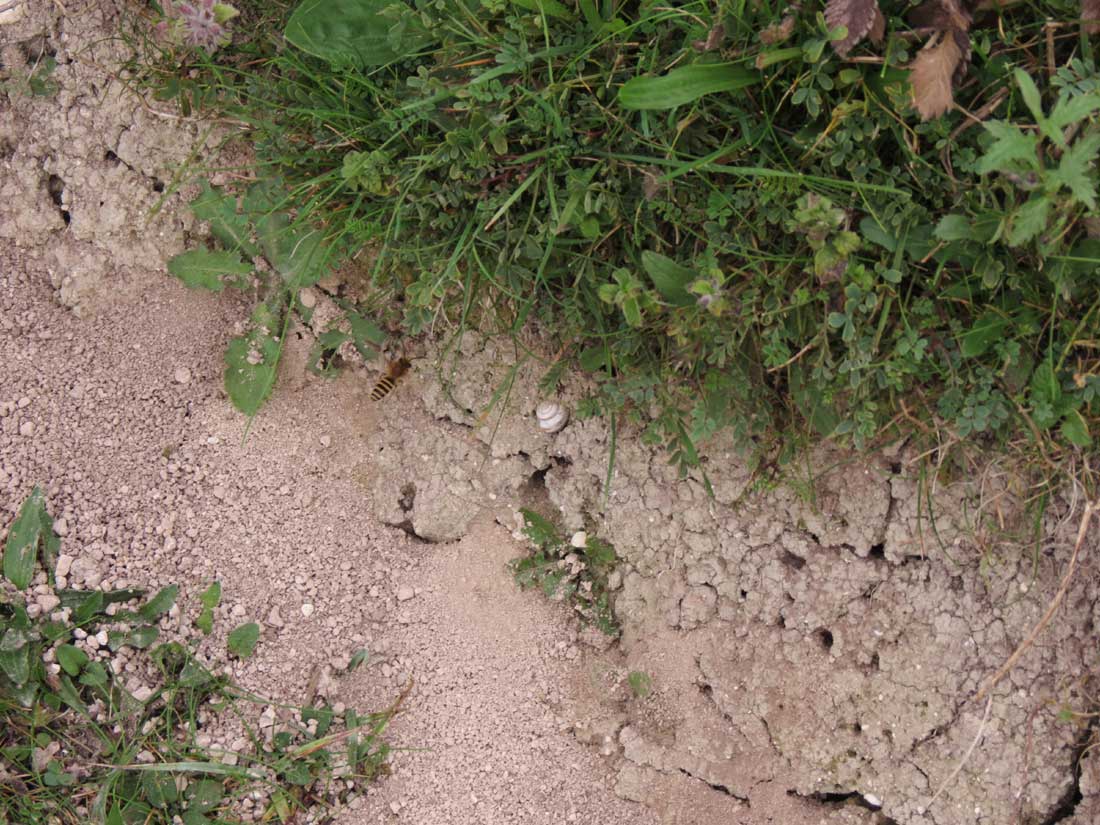 |

Nearer
the northern end of the lower slopes of Mill
Hill, and sometimes near the path, there were small cliff edges of
exposed soil and these were used by congregations of the
Ivy Bee, Colletes
hederae.
|
| This
small bee was seen on its own on Devil's Bit
Scabious on the northern part of the lower
slopes of Mill Hill. It is a Halictus
sp. male.
ID
by bleu.geo
|
 |
27
August 2013
A small bee in my front garden in Corbyn Crescent, Shoreham, on a Greater Willowherb flower. The antennae are shorter on this bee than the ones seen earlier in the month. |
| 19
August 2013
The small bee skulking around the lower slopes of Mill Hill was thought to be a Nomada kleptoparastic (cuckoo) bee. |
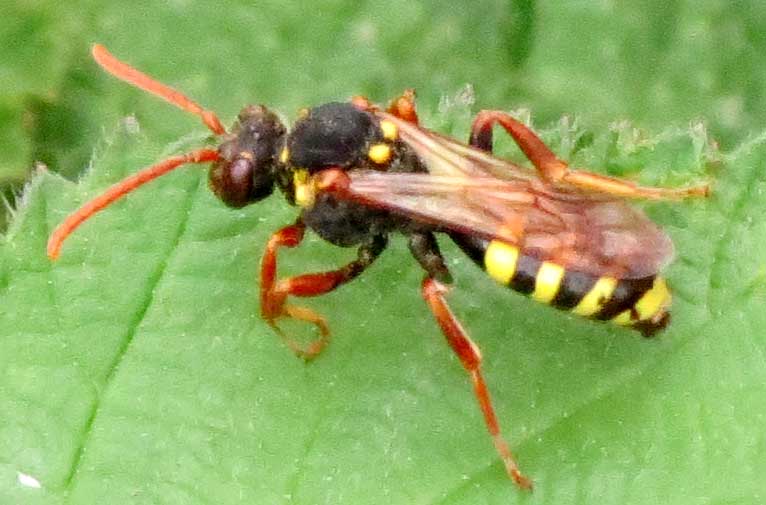 |
| 13
August 2013
Chalk Furrow Bee
ID
by
Josh Nelson
Ispot
Mill Hill |
 |
 |
| 6
May 2013
Red Mason Bee, Osmia bicornis (= O.rufa), on Green Alkanet ID
by Janet
on the official forum of the Bees, Wasps and Ants Recording Society (BWARS) |
 |
Small bee on Mill Hill, possibly a Lasioglossum
5 July 2012
Leafcutter Bee
A Leafcutter Bee carefully selected Rose leaves and then cut them up and carried them away in Ray Hamblett's south Lancing garden. The whole process of cutting took about ten seconds.
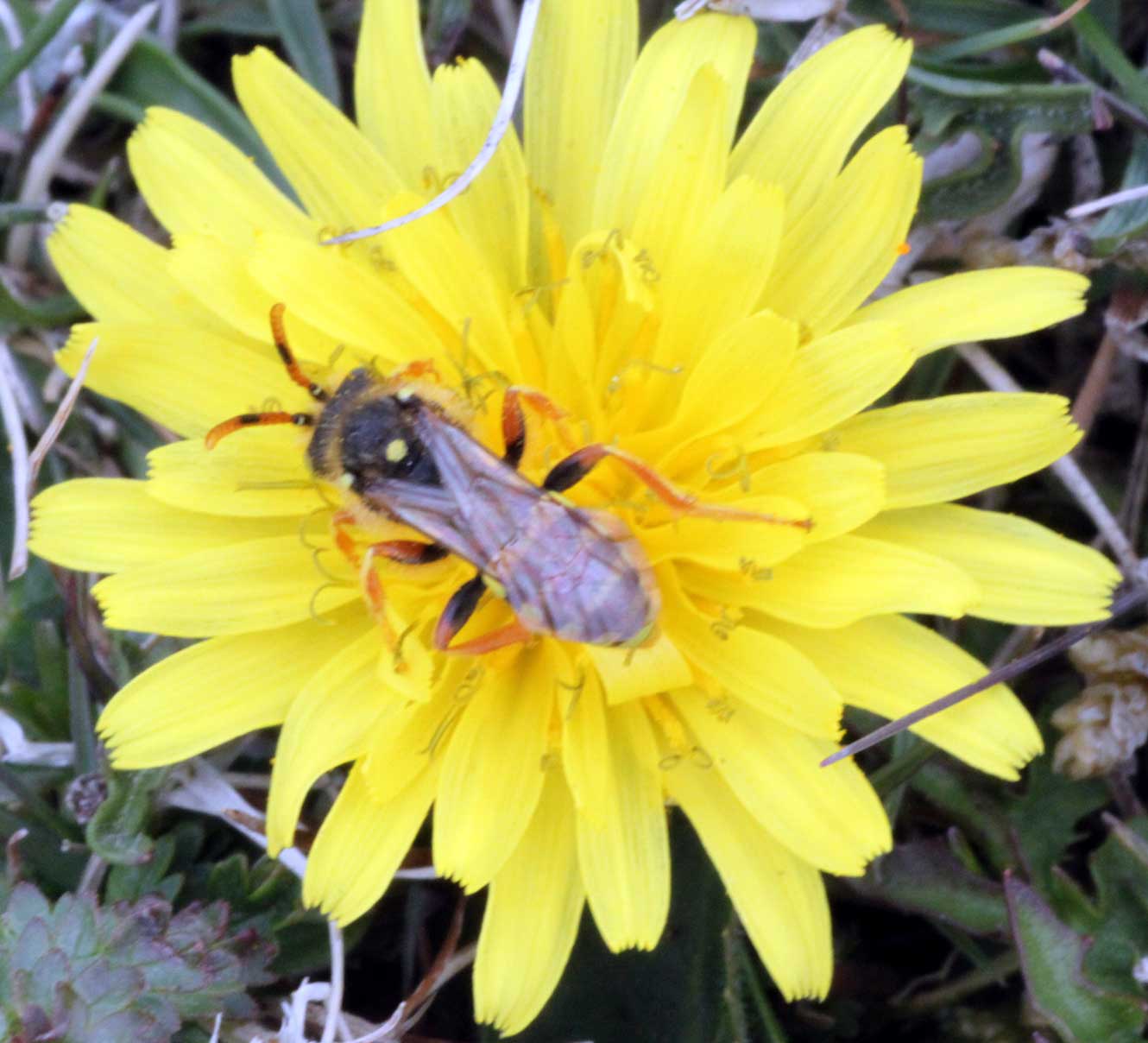 |
16
April 2012
Small bee on Mill Hill. Nomada fucata ? |
2011
 |
4
July 2011
At Buckingham Cutting |
 |
17
April 2011
Small bee on Mill Hill. Lasioglossum calceatum ? |
 |
12
April 2011
Andrena species ? on the Pixie Path (south-north section) Andrena cineraria ? |
2010
3 November
2010
Three
medium-sized
Yellow-footed
Solitary Bees, Lasioglossum
xanthopum, visited the flowers of
the Musk Thistles on
a cleared patch on the lower slopes of Mill Hill above the path.
Adur
Solitary Bees
 |
1
August 2010
A worker Saxon Wasp, Dolichovespula saxonica, on the Buckingham Cutting area (north of Buckingham Park). PS: originally identified as the Tree Wasp, Dolichovespula media. New
ID by
|
| A
terrier dog barking attracted my attention to the Wasps
Nest high
in a tree at the top of Buckingham Park, Shoreham. It is the papery
nest of the Tree
Wasp, Dolichovespula
media.
It is a dark brown and yellow wasp, intermediate in size between the Common Wasp and German Wasp and the Hornet. It is a recent colonist of Britain, having spread across England since the mid 1980s. The
highly active workers need mainly only carbohydrates. So the adults collect
nectar from flowers. For the queen
and to feed their young larvae, they hunt many kind of insects like flies
and other wasps.
|
 |
 |
2
July 2010
Unidentified Parasitic Wasp (not a sawfly ?) |
2009
21
June 2009
On
a breezy mostly overcast day the most interesting observation were twenty
or more small bees
on the flower heads of the Musk Thistle
on the side of the path as it runs past the Reservoir on the southern part
of Mill Hill.
 |
 |
|
|
|
|
 |
21
May 2009
This small bee is a male Nomada species seen on a Dandelion on the Coastal Link Cyclepath. Probably
(but not certainly) Nomada flava.
|
 |
 |
This bee was identified
as such from its antennae.
A male Osmia bicornis. |
 |
A female Andrena
cf. carantonica
Now Andrena scotica |
 |
14
April 2009
This small bee was spotted at the extreme southern end of the Coastal Link Cyclepath. It
is an Andrena
species.
Suggested
ID by Stuart Roberts
|